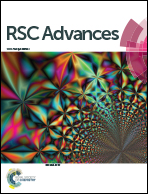Temperature dependence of poly(lactic acid) mechanical properties
Abstract
The mechanical properties of polymers are not only determined by their structures, but also related to the temperature field in which they are located. The yield behaviors, Young's modulus and structures of injection-molded poly(lactic acid) (PLA) samples after annealing at different temperatures were measured during stretching within 30–150 °C. The in situ photographs were recorded with a camera to observe deformation behavior during stretching. The less ordered α′ form crystal of PLA can be formed in the un-annealed PLA samples and those that were annealed at 70 °C with low crystallinity. The crystallinity increases with increasing annealing temperature and α form crystal is formed when the annealing temperature is higher than 100 °C. The stretched samples with low crystallinity show the first yield at draw temperatures below the glass transition temperature (Tg) and the second yield above Tg. For the samples annealed between 80 and 120 °C, a peculiar double yield appears when stretched within 50–60 °C and only the first or the second yield can be found at the lower and higher draw temperatures. The yield strain and yield stress together with Young's modulus were obtained and discussed in terms of the effects of the draw temperature and crystalline structure of PLA samples.


 Please wait while we load your content...
Please wait while we load your content...